FAQs
Q: What May Cause Bad Breath?
- Morning time – Saliva flow almost stops during sleep and its reduced cleansing action allows bacteria to grow, causing bad breath.
- Certain foods – Garlic, onions, etc. Foods containing odor-causing compounds enter the blood stream; they are transferred to the lungs, where they are exhaled.
- Poor oral hygiene habits – Food particles remaining in the mouth promote bacterial growth.
- Periodontal (gum) disease – Colonies of bacteria and food debris residing under inflamed gums.
- Dental cavities and improperly fitted dental appliances – May also contribute to bad breath.
- Dry mouth (Xerostomia) – May be caused by certain medications, salivary gland problems, or continuous mouth breathing.
- Tobacco products – Dry the mouth, causing bad breath.
- Dieting – Certain chemicals called ketones are released in the breath as the body burns fat.
- Dehydration, hunger, and missed meals – Drinking water and chewing food increases saliva flow and washes bacteria away.
- Certain medical conditions and illnesses – Diabetes, liver and kidney problems, chronic sinus infections, bronchitis, and pneumonia are several conditions that may contribute to bad breath.
- Keeping a record of what you eat may help identify the cause of bad breath. Also, review your current medications, recent surgeries, or illnesses with your dentist.
Q: What Can I Do To Prevent Bad Breath?
Practice good oral hygiene – Brush at least twice a day with anADAapproved fluoride toothpaste and toothbrush. Floss daily to remove food debris and plaque from in between the teeth and under the gumline. Brush or use a tongue scraper to clean the tongue and reach the back areas and replace your toothbrush every 2 to 3 months.
- If you wear dentures or removable bridges, clean them thoroughly and place them back in your mouth in the morning.
- See your dentist regularly – Get a check-up and cleaning at least twice a year. If you have or have had periodontal disease, your dentist will recommend more frequent visits.
- Stop smoking/chewing tobacco – Ask your dentist what they recommend to help break the habit.
- Drink water frequently – Water will help keep your mouth moist and wash away bacteria.
- Use mouthwash/rinses – Some over-the-counter products only provide a temporary solution to mask unpleasant mouth odor. Ask your dentist about antiseptic rinses that not only alleviate bad breath, but also kill the germs that cause the problem.
In most cases, your dentist can treat the cause of bad breath. If it is determined that your mouth is healthy, but bad breath is persistent, your dentist may refer you to your physician to determine the cause of the condition and an appropriate treatment plan.
Q: How Often Should I Brush And Floss?
Brushing and flossing help control the plaque and bacteria that can cause dental disease.
Plaque is a film of food debris, bacteria, and saliva that sticks to the teeth and gums. The bacteria in plaque convert certain food particles into acids that cause tooth decay. Also, if plaque is not removed, it turns into calculus (tartar). If plaque and calculus are not removed, they begin to destroy the gums and bone, causing periodontal (gum) disease.
Plaque formation and growth is continuous and can only be controlled by regular brushing, flossing, and the use of other dental aids.
Toothbrushing – Brush your teeth at least twice a day (especially before going to bed at night) with anADAapproved soft bristle brush and toothpaste.
- Brush at a 45 degree angle to the gums, gently using a small, circular motion, ensuring that you always feel the bristles on the gums.
- Brush the all surfaces of each tooth.
- Brush your tongue to remove bacteria and freshen your breath.
Flossing – Daily flossing is the best way to clean between the teeth and under the gum line. Flossing not only helps clean these spaces, it disrupts plaque colonies from building up, preventing damage to the gums, teeth, and bone.
- Take 12-16 inches (30-40cm) of dental floss and wrap it around your middle fingers, leaving about 2 inches (5cm) of floss between the hands.
- Using your thumbs and forefingers to guide the floss, gently insert the floss between teeth using a sawing motion.
- Curve the floss into a “C” shape around each tooth and under the gum line. Gently move the floss up and down, cleaning the side of each tooth.
Floss holders are recommended if you have difficulty using conventional floss.
Rinsing – It is important to rinse your mouth with water after brushing, and also after meals if you are unable to brush. If you are using an over-the-counter product for rinsing, it’s a good idea to consult with your dentist or dental hygienist on its appropriateness for you.
Q: Are Amalgam (Silver) Fillings Safe?
Over the years there has been some concern as to the safety of amalgam (silver) fillings. An amalgam is a blend of copper, silver, tin and zinc, bound by elemental mercury. Dentists have used this blended metal to fill teeth for more than 100 years. The controversy is due to claims that the exposure to the vapor and minute particles from the mercury can cause a variety of health problems.
According to the American Dental Association (ADA), up to 76% of dentists use silver containing mercury to fill teeth. TheADAalso states that silver fillings are safe and that studies have failed to find any link between silver containing mercury and any medical disorder.
The general consensus is that amalgam (silver) fillings are safe. Along with theADA’s position, the Center for Disease Control (CDC), the World Health Organization, the FDA, and others support the use of silver fillings as safe, durable, and cost effective. The U.S. Public Health Service says that the only reason not to use silver fillings is when a patient has an allergy to any component of this type of filling. TheADAhas had fewer than 100 reported incidents of an allergy to components of silver fillings, and this is out of countless millions of silver fillings over the decades.
Although studies indicate that there are no measurable health risks to patients who have silver fillings, we do know that mercury is a toxic material when we are exposed at high, unsafe levels. For instance, we have been warned to limit the consumption of certain types of fish that carry high levels of mercury in them. However, with respect to amalgam fillings, theADAmaintains that when the mercury combines with the other components of the filling, it becomes an inactive substance that is safe.
There are numerous options to silver fillings, including composite (tooth-colored), porcelain, and gold fillings. We encourage you to discuss these options with your dentist so you can determine which is the best option for you.
Q: How Often Should I Have A Dental Exam And Cleaning?
You should have your teeth checked and cleaned at least twice a year, though your dentist or dental hygienist may recommend more frequent visits.
Regular dental exams and cleaning visits are essential in preventing dental problems and maintaining the health of your teeth and gums. At these visits, your teeth are cleaned and checked for cavities. Additionally, there are many other things that can be checked and monitored to help detect, prevent, and maintain your dental health. These include:
- Medical history review
- Diagnostic x-rays (if required): Essential for detection of decay, tumors, cysts, and bone loss. X-rays also help determine tooth and root positions.
- Oral cancer screening with our VEL Scope system
- Gum disease evaluation: Check the gums and bone around the teeth for any signs of periodontal disease.
- Examination of tooth decay
- Examination of existing restorations: Check current fillings, crowns, etc.
- Removal of calculus (tartar): Calculus is hardened plaque that has been left on the tooth for sometime and is now firmly attached to the tooth surface. Calculus forms above and below the gum line, and can only be removed with special dental instruments.
- Removal of plaque: Plaque is a sticky, almost invisible film that forms on the teeth. It is a growing colony of living bacteria, food debris, and saliva. The bacteria produce toxins (poisons) that inflame the gums. This inflammation is the start of periodontal disease!
- Teeth polishing: Removes stain and plaque that is not otherwise removed during tooth brushing and scaling.
- Oral hygiene recommendations: Review and recommend oral hygiene aids as needed (electric dental toothbrushes, special cleaning aids, fluorides, rinses, etc.).
As you can see, a good dental exam and cleaning involves quite a lot more than just checking for cavities and polishing your teeth. We are committed to providing you with the best possible care, and to do so will require regular check-ups and cleanings.
Q: How Can I Tell If I Have Gingivitis Or Periodontitis (Gum Disease)?
Most people unaware of it as the disease is often painless in the early stages. Unlike tooth decay, which often causes discomfort, it is possible to have periodontal disease without noticeable symptoms. Having regular dental check-ups and periodontal examinations are very important and will help detect if periodontal problems exist.
Periodontal disease begins when plaque, a sticky, colourless, film of bacteria, food debris, and saliva, is left on the teeth and gums. The bacteria produce toxins (acids) that inflame the gums and slowly destroy the bone. Brushing and flossing regularly and properly will ensure that plaque is not left behind to do its damage.
Signs and Symptoms of Periodontal Disease
- Red and puffy gums – Gums should never be red or swollen.
- Bleeding gums – Gums should rarely bleed, even when you brush vigorously or use dental floss.
- Persistent bad breath – Caused by bacteria in the mouth.
- New spacing between teeth – Caused by bone loss.
- Loose teeth – Also caused by bone loss or weakened periodontal fibres
- Pus around the teeth and gums – Sign that there is an infection present.
- Receding gums – Loss of gum around a tooth.
- Tenderness or Discomfort – Plaque, calculus, and bacteria irritate the gums and teeth.
Good oral hygiene, a balanced diet, and regular dental visits can help reduce your risk of developing periodontal disease. For further information regarding periodontal disease please visit our Periodontal (Gum) Disease page or contact our friendly team to arrange a consultation.
Q: Why Is It Important To Use Dental Floss?
Brushing our teeth removes food particles, plaque, and bacteria from all tooth surfaces, except in between the teeth. Unfortunately, our toothbrush can’t reach these areas that are highly susceptible to decay and periodontal (gum) disease.
Daily flossing is the best way to clean between the teeth and under the gumline. Flossing not only helps clean these spaces, it disrupts plaque colonies from building up, preventing damage to the gums, teeth, and bone.
Plaque is a sticky, almost invisible film that forms on the teeth. It is a growing colony of living bacteria, food debris, and saliva. The bacteria produce toxins (acids) that cause cavities and irritate and inflame the gums. Also, when plaque is not removed above and below the gumline, it hardens and turns into calculus (tartar). This will further irritate and inflame the gums and also slowly destroy the bone. This is the beginning of periodontal disease.
How to floss properly:
- Take 12-16 inches (30-40cm) of dental floss and wrap it around your middle fingers, leaving about 2 inches (5cm) of floss between the hands.
- Using your thumbs and forefingers to guide the floss, gently insert the floss between teeth using a sawing motion.
- Curve the floss into a “C” shape around each tooth and under the gumline. Gently move the floss up and down, cleaning the side of each tooth.
Floss holders are recommended if you have difficulty using conventional floss.
Daily flossing will help you keep a bright, healthy smile for life!
Q: How Can Cosmetic Dentistry Help Improve The Appearance Of My Smile?
If you’re feeling somewhat self-conscious about your teeth, or just want to improve your smile, cosmetic dental treatments may be the answer to a brighter, whiter smile.
Cosmetic dentistry has become very popular in the last several years, not only due to the many advances in cosmetic dental procedures and materials available today, but also because patients are becoming more and more focused on improving their overall health. This includes dental prevention and having a healthier, whiter and brighter smile.
There are many cosmetic dental procedures available to improve your teeth and enhance your smile. Depending on your particular needs, cosmetic dental treatments can change your smile dramatically, from restoring a single tooth to having a full mouth make-over. Ask your dentist how you can improve the health and beauty of your smile with cosmetic dentistry.
For more information on our cosmetic procedures, visit our cosmetic dentistry page.
Q: What Are Porcelain Veneers And How Can They Improve My Smile?
Porcelain veneers are very thin shells of tooth-shaped porcelain that are individually crafted to cover the fronts of teeth. They are very durable and will not stain, making them a popular solution for those seeking to restore or enhance their smile. For more information on porcelain veneers visit our veneers services page.
Q:What Can I Do About Stained Or Discoloured Teeth?
Since teeth whitening has now become the number one aesthetic concern of many patients, there are numerous products and methods available to achieve a brighter smile.
Professional teeth whitening (or bleaching) is a simple, non-invasive dental treatment used to lighten natural colour of your teeth. Over-the-counter products are also available, but they are much less effective than professional treatments and may not be approved by the American Dental Association (ADA).
As we age, the outer layer of tooth enamel wears away, eventually revealing a darker or yellow shade. The colour of our teeth also comes from the inside of the tooth, which may become darker over time. Smoking, drinking coffee, tea, and wine may also contribute to tooth discoloration, making our teeth yellow and dull. Sometimes, teeth can become discoloured from taking certain medications as a child, such as tetracycline. Excessive fluoridation (fluorosis) during tooth development can also cause teeth to become discoloured.
It’s important to have your teeth evaluated by your dentist to determine if you’re a good candidate for whitening procedures. Occasionally, tetracycline and fluorosis stains are difficult to bleach and your dentist may offer other options, such as veneers or crowns to cover up such stains. Since teeth whitening only works on natural tooth enamel, it is also important to evaluate replacement of any old fillings, crowns, etc. before bleaching begins. Once the whitening is achieved, your dentist can match the new restorations to the shade of the newly whitened teeth.
For more information on our whitening procedures we invite you to explore out teeth whitening page.
Teeth whitening can be very effective and can give you a brighter, whiter smile!
What Are The Benefits Of Dental Implants?
As an effective solution for tooth loss, at Council Avenue Dental and Implant Centre we feel dental implants offer a range of benefits including,
- Renewing and increasing the patient’s ability to chew food and communicate properly.
- Dental implants can also help restore facial aesthetics and the ‘sunken face’ look which can result from bone loss.
- Dental implants can help preserve the remaining bone structure of the jaw which may start to recede if left untreated.
- Dental implants help to reduce the possibility of gum (periodontal) disease and infection.
- Dental implants can aesthetically enhance the structure and shape of your smile.
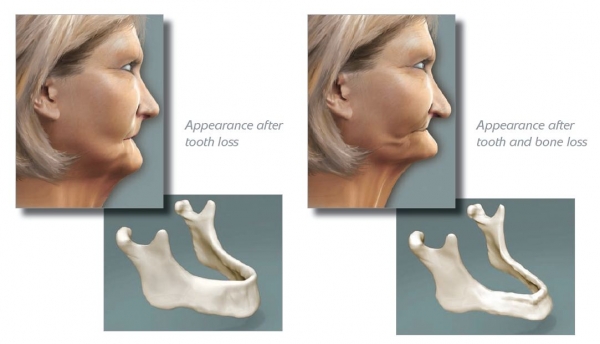
Who Is A Candidate For Dental Implants?
At Council Avenue Dental and Implant Centre anyone can be considered as a candidate for dental implants providing they are reasonably health and need a solution for tooth loss.
Your experience dentist at Council Avenue Dental and Implant Centre will also need to ensure that you have enough bone in the jaw to support a dental implant.
Dental implants are also commonly used as a more permanent solution to replace small bridges, removable or partial dentures and single or many missing teeth.
Why Do Dental Implants Use Titanium In The Jawbone?
Dental Implants utilise titanium for its biocompatibility. This means that the surrounding, gum, bone, nerves and tissues will from a strong bond with the titanium implant. This ensures that it becomes a permanent replacement for the missing toot structure.
Dental implants also use titanium as it is an exceptionally strong and durable material and allows the full functionality and strength of an actual tooth, providing the best support for a crown.
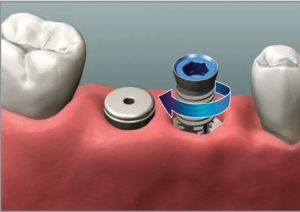
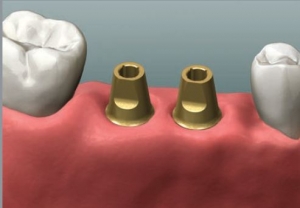
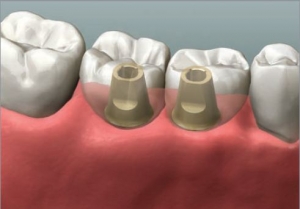
What If There Is Not Enough Bone To Support The Implant?
Dental Implants do require a certain amount of bone to provide a strong foundation for the implant. If a candidate does not have enough bone to support the implant bone grafting or bone augmentation procedures may be used to supplement the existing bone and support the dental implant. In extremely rare cases a large lack of bone can render the placement of a dental implant impossible.
Is The Procedure Painful And How Is It Managed?
The placement of dental implants is a substantial dental procedure which at Council Avenue Dental and Implant Centre, local anaesthetic is used to help ensure that the procedures is complete in comfort. For particularly anxious patients or more severe cases a general anaesthetic is available at the local hospital to complete the procedure.
Initially, following the operation considerable discomfort and pain can be experienced however this is managed with oral medication. This pain substantially subsides the net day and is then managed with more mild medication.
Minor bleeding, bruising and swelling is also expected after the placement of the implant, while your jaw adjusts to the addition. In the case of multiple implants being place this discomfort and side effects are usually more severe, this is particularly true if bone grafting has been required.
How Many Visits Does The Procedure Take?
The number of visits required for the placement of dental implants varies from cases to case and depends on the patient’s individual circumstance. For the more simple cases it can often be complete over the course of two visits however for those implant cases which are more complicated this can take a few visits over a couple of months. Upon talking to your experienced dentist you will be provided with a personalised treatment place outlining how long the procedure will take and what will be involved at each stage.
How Long Will My Dental Implant Last?
If patients retain a good oral hygiene routine and have regular visits to their dentist, dental implants will often last at least 15 years.
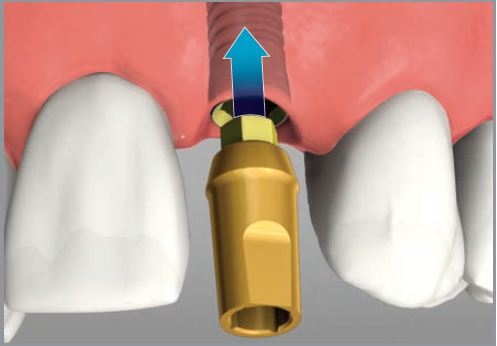
How Much Will A Dental Implant Cost?
Dental implant costs vary greatly depending on a number of factors including the number of dental implants required, the severity of the bone recession and the patients individual circumstances. After a consultation with your dentist at Council Avenue Dental and Implant Centre you will be provided with a customised treatment plan which will outline all of the costs.
Is Orthodontic Work Permanent?
It is normal for minor tooth movements to occur throughout life, therefore there is no permanent guarantee. However, it is very rare for teeth to alter sufficiently to need any further treatment.
Am I Too Old For Braces?
There is no age limit for getting braces. If your gums and the bone around your teeth are healthy then braces can be used to straighten your teeth and correct your bite.
Will I Need To Change My Diet If I Get Braces?
You will need to change your diet to avoid damaging the braces. If the brace breaks the treatment time will increase. To avoid prolonging the treatment you will need to avoid all hard or chewy foods while you are undergoing this treatment. It is also recommended that you avoid sugary foods, fizzy drinks and snacking between meals.
What Is Orthodontics?
Orthodontics is the branch of dentistry that specializes in the diagnosis, prevention and treatment of dental and facial irregularities.
What Are Some Possible Benefits Of Orthodontics?
- A more attractive smile
- Reduced self-consciousness about appearance during critical development years
- Better functioning teeth
- Higher self-confidence
- Increased ability to clean the teeth
- Improved force distribution and wear patterns on the teeth
- Better long-term tooth and gum health
- The movement of permanent teeth into more favourable positions
- A reduced risk of injury to protruded front teeth
- Optimisation of other dental treatment
What Are Some Signs That Braces Maybe Needed?
- Upper front teeth protrude excessively over the lower teeth, or are bucked
- Upper front teeth cover the majority of the lower teeth when biting together (deep bite)
- Upper front teeth are behind or inside the lower front teeth (underbite)
- The upper and lower front teeth do not touch when biting together (open bite)
- Crowded or overlapped teeth (the centre of the upper and lower teeth do not line up)
- Finger or thumb-sucking habits, which continue after 6 or 7 years old
- Difficulty chewing
- Teeth wearing unevenly or excessively
- The lower jaw shifts to one side or the other when biting together
- Spaces between the teeth
- Headache and jaw problems
At What Age Should Orthodontic Treatment Occur?
Orthodontic treatment can begin at any age. Dr Koh can correct orthodontic problems more easily if he detects them at an early age before jaw growth has slowed. Early treatment may mean that you can avoid surgery and more serious complications. All children should first visit an orthodontist by age 9, or even earlier if parents, the family dentist or the child’s physician detects a problem.
How Does Orthodontic Care Improve Self-Image?
Appearance has been related to interpersonal skills, popularity, social behaviours, personality style and self-image. There can be little doubt that an attractive facial appearance and smile can improve the quality of life in many dimensions. Dr Koh considers all factors of facial, cosmetic and dental appearance in planning individual treatment strategies.
Would An Adult Patient Benefit From Orthodontics?
Orthodontic treatment can be successful at any age. Everyone wants
a beautiful and healthy smile. Today, adults constitute 40-50% of orthodontic patients.
How Does Orthodontic Treatment Work?
Braces use steady, gentle pressure to gradually move teeth into their proper positions. The brackets that Dr Koh places on your teeth and the archwire that connects them are the main components. When Dr Koh places the archwire into the brackets, it slowly returns to its original shape. As it does, it applies pressure to move your teeth into their new, more ideal positions.
Should I See My General Dentist While I Have Braces?
Definitely yes, you should continue to see your general dentist at least every six months for cleanings and dental checkups.
How Long Does Orthodontic Treatment Last?
Treatment times vary on a case-by-case basis, but the average treatment time is 1-2 years. The patient’s growth rate and severity of the necessary correction can affect treatment. Treatment length also depends upon patient compliance. Maintaining good oral hygiene and keeping regular appointments are important in keeping treatment time on schedule.
Do Braces Hurt?
Placing bands and brackets on your teeth does not hurt. Once braces are placed and connected with the archwires, you may feel some soreness of your gums for 1-4 days. Your lips and cheeks may need 1-2 weeks to get used to the braces.
Will Braces Interfere With Playing Sports?
No. Dr Koh recommends, however, that patients protect their smiles by wearing a mouth guard when participating in any sporting activity. Mouth guards are inexpensive, comfortable, and come in a variety of colours and patterns.
Will Braces Interfere With Playing Musical Instruments?
No. However, there may be an initial adjustment period. In addition, Dr Koh can provide brace covers to prevent discomfort.
![]()
Excellence in
personalised dental care
Find out why so many patients love coming to see us, and book your appointment today.
or call us on (08) 9592 2210
Health Funds
We accept all health funds and are also affiliated with Bupa, HBF, HCF, and NIB.